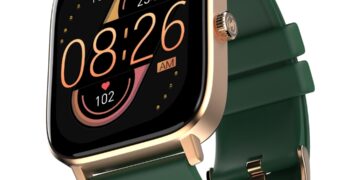The look of a site or an application is much less important than the experience of a user when visiting this site or using this application. It is a mix of strategy, design and usability, which leads to a seamless and delightful experience of the user. This is why knowing the major aspects of UI/UX design is a must to anyone who wants to generate user-friendly online products. Any new designer can join a UI UX Designer Course in Chennai to acquire a good knowledge base of these principles of design and enter a fulfilling career. The paper examines the five main components of UI/UX design and the way they all help in making the digital experience smooth.
1. Strategy – Understanding User Needs
Designers have to realize the needs of the user before the visual layout of any product is created. The most important stage in UI/UX design is strategy. It entails the determination of the business objectives, the user expectations as well as the issues which the design is intended to address. During this stage, it is crucial to conduct user research, analyze competitors, and use data insights.
To learn the behavior of users, designers can use surveys, interviews, and researches of the market. The information assists in shaping the design in such a manner that it is able to conform to the needs of the user as well as business goals. No matter how well a product is designed, without a good plan it cannot achieve its objectives.
2. Scope – Defining the Features and Content
After the strategy is in place, the scope should be defined. This component is concentrated on what attributes the product will possess and what will be supplied to the user. It is an interface between plan and action.
In case of an e-commerce application, it may cover user login, listing of products, search filters, shopping cart and payment gateway. Specifying these features at an early stage will keep the teams focused and only the necessary and relevant aspects will be developed.
In this phase, it is also necessary to develop a clear content strategy. The placement and the style and tone of content must be consistent with the general user experience. Inconsistent or messy content may break the flow of the user.
3. Structure – Organizing the Information
The third one is structure. In this case, designers make the choice of the way in which information and features will be arranged on the site or application. It entails developing the information architecture, the course of the navigation and user pathways.
Information architecture is done to ensure that the users easily find what they want. Sitemaps, flow-charts, and card-sorting are some of the tools that designers usually employ to organize the content in a logical way. This is meant to reduce confusion and make users flow naturally into one action to another.
The structure is particularly essential when it comes to content-rich websites and applications. As an illustration, on a news portal or some educational platform, lack of structure can hinder the ability of users to find articles, videos, or courses.
It is also at this stage that Artificial Intelligence Course in Chennai can enter into the picture. The latest UX tools are based on AI and can study the user behavior and recommend changes in the structure, e.g. predictive search or personalized navigation. This technology application keeps designs smart, interactive and user friendly.
4. Skeleton – Designing the Layout and Interface
The ideas begin to receive a visual shape in the skeleton. It comprises the essential structure of the page or screen and contains wireframes, the interface layout, and interactive components.
This stage identifies the position of buttons, pictures, blocks of text, navigation bars, and other highly important things. The idea is to build an interface, which will feel intuitive and will not leave users in confusion.
The wireframes are usually used as a blueprint prior to real visual design. They are low-fidelity screen depictions to enable designers and other stakeholders to come to a consensus on layout choices in advance of spending time on high-res representation.
5. Surface – Visual Design and Final Presentation
The last aspect of UI/UX design is the surface. This is the layer that the users see and touch. It comprises colors, types, pictures, icons, and animations, and branding.
An excellent design of visuals does not only make a commodity appear beautiful, but it also enhances usability. A cohesive experience is guaranteed by the consistent use of colors, spacing, and design elements. It makes it easy to read, gives emphasis to significant steps, and represents the brand.
Emotional responses have to be taken into consideration as well by the designers. The visual and the tactile experience of the product must create a sense of security, eagerness, or familiarity based on the brand tone and expected feeling by the user.
It is at this point that creativity skills come in and a Graphic Design Course in Chennai can be very useful. Knowledge of graphic design regulations such as color theory, contrast, alignment, and visual hierarchy assists designers to develop refined and functional UI surfaces that can appeal to the visual and emotional sense of the user.
UI/UX design does not only mean creating beautiful things but it is the craft of creating meaningful and pleasant user experiences. The five key elements strategy, scope, structure, skeleton, and surface will enable the designer to produce a product that can be functional and at the same time enjoyable to use.




























































